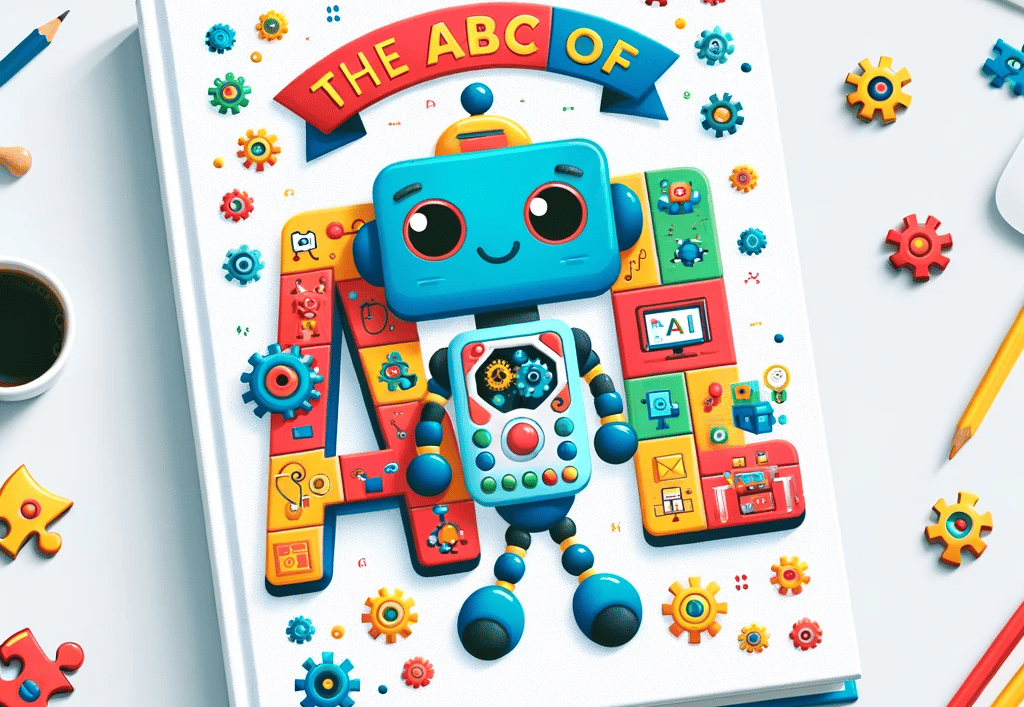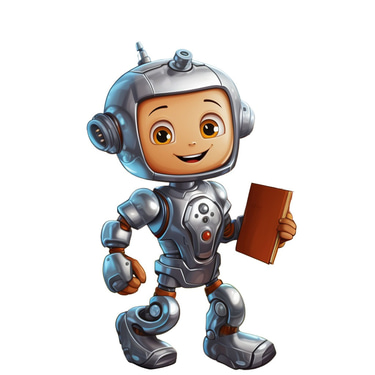The ABCs of AI: Simplifying Artificial Intelligence Concepts for Young Minds
11/14/20235 min read


Understanding AI Basics
Artificial Intelligence, or AI, is a fascinating field that involves creating computer systems capable of performing tasks that typically require human intelligence. These tasks can include things like speech recognition, problem-solving, and decision-making. AI is all around us, from the voice assistants on our smartphones to the algorithms that power social media feeds.
At its core, AI is about teaching machines to think and learn like humans. This involves creating algorithms and models that can process and analyze data, recognize patterns, and make predictions or decisions based on that information. AI can be divided into two main categories: narrow AI and general AI. Narrow AI refers to systems that are designed to perform specific tasks, while general AI aims to create machines that can understand and learn any intellectual task (Thinking activities) that a human being can do.
Real-Life AI Examples
AI is already being used in various industries and sectors. For example, in healthcare, AI algorithms can analyze medical images to detect diseases like cancer at an early stage. In finance, AI-powered systems can analyze vast amounts of data to make investment decisions. AI is also used in transportation, where self-driving cars are being developed to navigate roads and make decisions based on real-time data.
Another real-life example of AI is virtual assistants like Siri, Alexa, and Google Assistant. These voice-controlled AI systems can answer questions, set reminders, play music, and even control smart home devices. They use natural language processing and machine learning algorithms to understand and respond to human commands.
Simple AI Terminology
When learning about AI, it's helpful to understand some common terminology:
Machine Learning (ML): Machine learning is a subset of AI that focuses on developing algorithms that can learn from and make predictions or decisions based on data. It involves training models on large datasets to recognize patterns and make accurate predictions.
Deep Learning: Deep learning is a subfield of machine learning that uses neural networks with multiple layers to process and analyze data. It has been particularly successful in tasks such as image and speech recognition.
Natural Language Processing (NLP): NLP involves teaching computers to understand and process human language. It enables AI systems to understand and respond to spoken or written commands.
Neural Networks: Neural networks are computational models inspired by the structure and function of the human brain. They consist of interconnected nodes, or "neurons," that process and transmit information.
Hands-On AI Projects
Learning about AI doesn't have to be limited to theory. There are plenty of hands-on projects that can help young minds explore and understand AI concepts.
One fun project is building a simple chatbot. A chatbot is a computer program designed to simulate conversation with human users. By building a chatbot, kids can learn about natural language processing and how AI systems can understand and respond to human language.
Another project idea is creating a recommendation system. A recommendation system suggests items or content based on a user's preferences or behavior. Kids can build a simple recommendation system using machine learning algorithms to recommend books, movies, or music based on user input.
These hands-on projects not only provide a practical understanding of AI but also foster creativity, problem-solving skills, and critical thinking.
AI in Storytelling
AI is not just limited to technical applications; it can also be used in creative fields like storytelling. AI can generate stories, write poetry, compose music, and even create artwork.
For example, there are AI programs that can generate fictional stories based on given prompts. These programs use natural language processing and machine learning algorithms to analyze patterns in existing stories and create new ones. While AI-generated stories may lack the human touch, they can still be a source of inspiration and creativity.
AI can also be used to enhance storytelling experiences. Virtual reality (VR) and augmented reality (AR) technologies combined with AI can create immersive and interactive storytelling experiences. Imagine stepping into a virtual world where AI characters respond to your actions and decisions, making the story come alive.
AI Ethics for Kids
As AI becomes more prevalent in our lives, it's important to teach kids about AI ethics. AI systems are designed and trained by humans, which means they can inherit human biases and prejudices. It's crucial to ensure that AI systems are fair, transparent, and accountable.
One way to introduce AI ethics to kids is by discussing the concept of bias. AI algorithms can inadvertently perpetuate biases present in the data they are trained on. For example, if an AI system is trained on a dataset that primarily consists of male voices, it may have difficulty understanding female voices. By raising awareness about bias, kids can learn to question and challenge the decisions made by AI systems.
Privacy is another important aspect of AI ethics. AI systems often rely on collecting and analyzing large amounts of personal data. It's essential to teach kids about the importance of privacy and the need to protect their personal information.
AI's Role in Problem-Solving
AI has the potential to revolutionize problem-solving by providing new tools and approaches. AI systems can analyze vast amounts of data, identify patterns, and make predictions or recommendations. This can be particularly useful in fields like medicine, finance, and environmental science.
For example, in medicine, AI algorithms can analyze patient data and medical records to diagnose diseases and recommend treatment plans. In finance, AI-powered systems can analyze market data and make investment decisions. In environmental science, AI can help analyze satellite imagery to monitor deforestation or predict natural disasters.
By understanding how AI can be applied to problem-solving, kids can start thinking creatively about how they can use AI to make a positive impact in their own lives and communities.
AI Safety and Privacy
While AI offers numerous benefits, it also raises concerns about safety and privacy. It's important to teach kids about these issues to ensure they can navigate the AI-powered world responsibly.
AI safety involves ensuring that AI systems are reliable and do not cause harm. For example, self-driving cars need to be programmed to prioritize safety and make ethical decisions in critical situations. Teaching kids about AI safety can help them understand the importance of designing AI systems with human well-being in mind.
Privacy is another key concern. AI systems often rely on collecting and analyzing personal data, which raises questions about data security and consent. It's crucial to teach kids about the importance of protecting their personal information and being aware of how their data is used.
The Future of AI
The field of AI is constantly evolving, and its future holds exciting possibilities. As technology advances, AI systems are becoming more sophisticated and capable.
One area of AI that holds promise is the development of general AI. General AI aims to create machines that can understand and learn any intellectual task that a human being can do. While we are still far from achieving this level of AI, researchers and scientists are working towards it.
AI is also expected to have a significant impact on the job market. While AI may automate certain tasks, it also has the potential to create new job opportunities. By understanding AI and its potential, kids can better prepare themselves for the future job market.
AI Learning Resources
There are plenty of resources available to help kids learn more about AI:
Books: There are several books available that introduce AI concepts in a fun and engaging way. Some recommended titles include "Hello Ruby: Adventures in Coding" by Linda Liukas and "Artificial Intelligence: A Guide for Thinking Humans" by Melanie Mitchell.
Online Courses: Platforms like Coursera and Udemy offer online courses specifically designed for kids to learn about AI. These courses provide interactive lessons and hands-on projects.
STEM Kits: There are STEM kits available that allow kids to build and program their own AI projects, such as robots or smart devices.
AI Websites and Blogs: Websites like AI4KIDS and AI for Kids provide resources, tutorials, and articles specifically aimed at teaching kids about AI.
By exploring these resources, kids can dive deeper into the world of AI and discover their passion for this exciting field.
